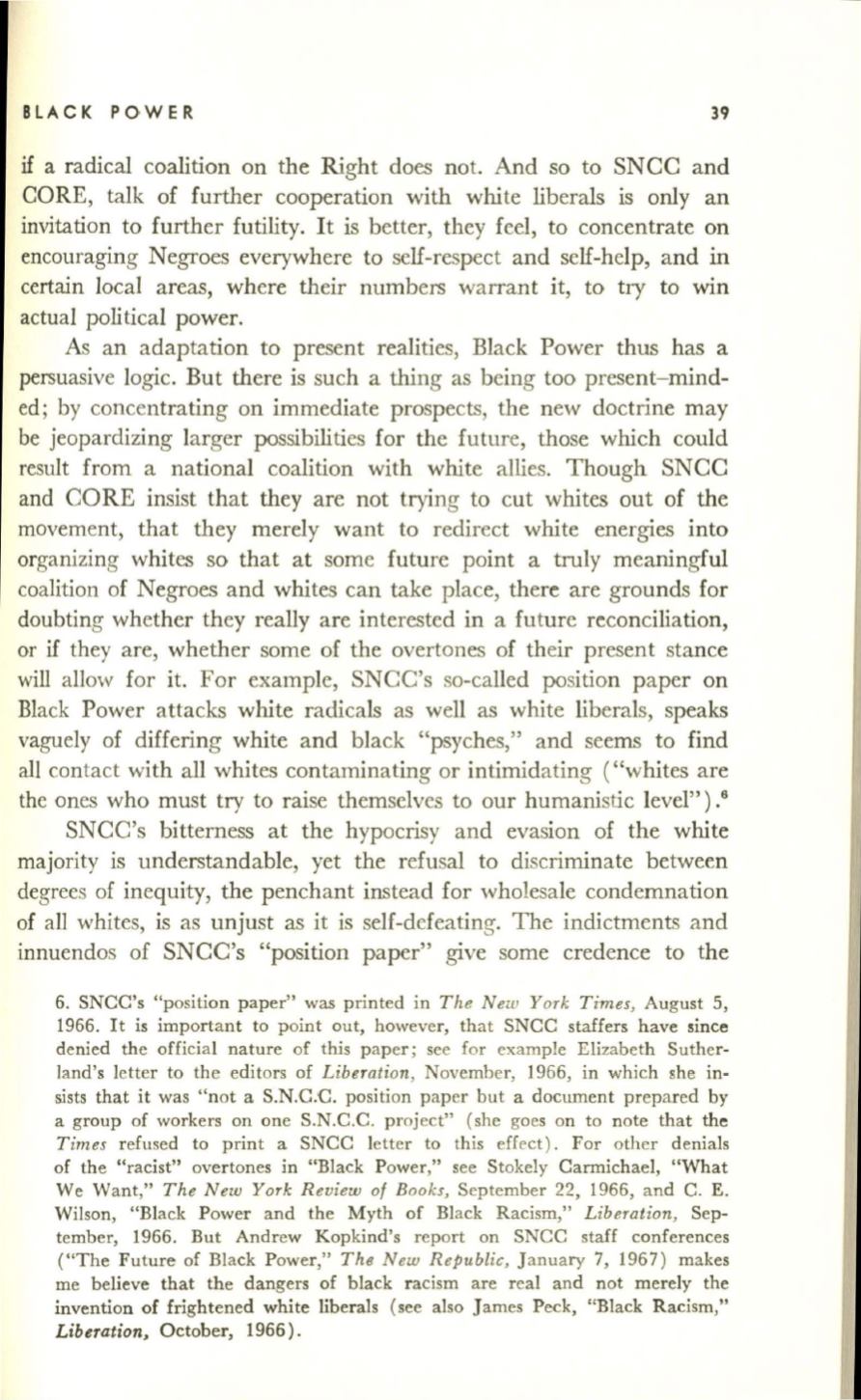
BLACK POWER
39
if
a radical coalition on the Right does not. And so to SNCC and
CORE, talk of further cooperation with white liberals is only an
invitation to further futility.
It
is better, they feel, to concentrate on
encouraging Negroes everywhere to self-respect and self-help, and in
certain local areas, where their numbers warrant it, to try to win
actual political power.
As
an adaptation to present realities, Black Power thus has a
persuasive logic. But there is such a thing as being too present-mind–
ed; by concentrating on immediate prospects, the new doctrine may
be jeopardizing larger possibilities for the future, those which could
result from a national coalition with white allies. Though SNCC
and CORE insist that they are not trying to cut whites out of the
movement, that they merely want to redirect white energies into
organizing whites so that at some future point a truly meaningful
coalition of Negroes and whites can take place, there are grounds for
doubting whether they really are interested in a future reconciliation,
or
if
they are, whether some of the overtones of their present stance
will
allow for it. For example, SNCC's so-called position paper on
Black Power attacks white radicals as well as white liberals, speaks
vaguely of differing white and black "psyches," and seems to find
all contact with
all
whites contaminating or intimidating ("whites are
the ones who must try to raise themselves to our humanistic level").6
SNCC's bitterness at the hypocrisy and evasion of the white
majority is understandable, yet the refusal to discriminate between
degrees of inequity, the penchant instead for wholesale condemnation
of all whites, is as unjust as it is self-defeating. The indictments and
innuendos of SNCC's "position paper" give some credence to the
6. SNCC's "position paper" was printed in
Th e New York Times,
August 5,
1966. It is important to point out, however, that SNCC staffers have since
denied the official nature of this paper; see for example Elizabeth Suther–
land's letter to the editors of
Liberation,
November, 1966, in which she in–
sists that it was "not a S.N.C.C. position paper but a document prepared by
a group of workers on one S.N.C.C. project" (she goes on to note that the
Times
refused to print a SNCC letter to this effect). For other denials
of the "racist" overtones in "Black Power," see Stokely Carmichael, "What
We Want,"
The New York Review of Books,
September 22, 1966, and C. E.
Wilson, "Black Power and the Myth of Black Racism,"
L iberation,
Sep–
tember, 1966. But Andrew Kopkind's report on SNCC staff conferences
("The Future of Black Power,"
Th8 New Republic,
J anuary 7, 1967) makes
me believe that the dangers of black racism are real and not merely the
invention of frightened white liberals (see also James Peck, "Black Racism,"
Liberation,
October, 1966).


